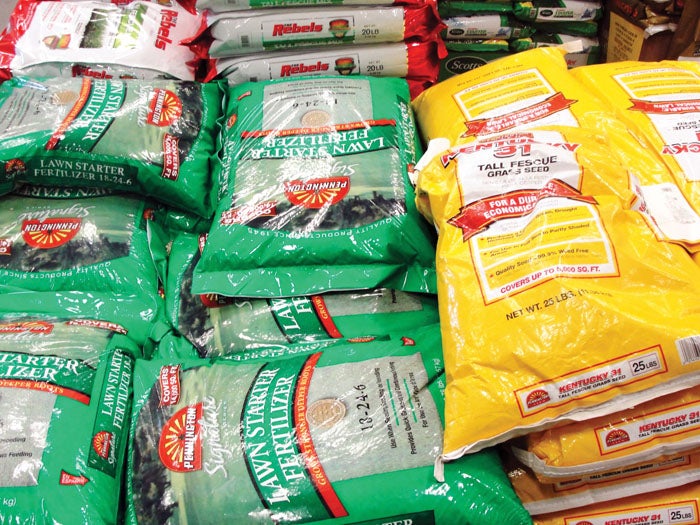Avoiding common mistakes with fescue lawns
Published 12:00 am Sunday, September 27, 2020

- It is important to measure and use the correct amount of seed and fertilizer on your lawn.
Fall is the best time to renovate or plant cool season fescue or fescue blend lawns. It’s a narrow window to work on lawns especially with unseasonable wet weather experienced this fall. Granted there’s not much we can do about the weather, but many lawn failures are a result of a few mistakes. Listed below are common mistakes that seem to haunt us all when we renovate our lawns.
Improper measurements. It is impossible to determine how much seed, fertilizer or water to use if you don’t have a grasp of the size of the lawn area you’re trying to maintain. Most people apply too much seed and don’t use enough fertilizer. Take a few minutes to measure your lawn.
No soil sampling. Applications of lime and fertilizers are a guess without a soil test. Most people guess when applying fertilizers, especially lime. Applying lime each year as a standard practice can raise the pH to unacceptable levels for fescue growth. Using too much lime can be a serious problem. This is a free service provided by the North Carolina Department of Agriculture of which very few take advantage.
Improper mowing practices. Many homeowners often mow fescue lawns too close. Three and half inches are normal for fescue lawns. Some will mow fescue as close as 2 inches. Fescue lawns often die completely when mowed this close, especially during a hot, dry or even wet summer. Dull blades can make beautiful lawns ugly and sharp blades can make a fair lawn look great. The majority of homeowners never sharpened their mower blades. Blades need to be sharpened about once or twice a month.
Inconsistent maintenance. Fescue lawns respond best to consistent maintenance in the spring and fall. If there is one aspect of lawn care that will make your lawn look best is consistent care, especially fertilization and weed control. Those that chose not to be consistent will have poor lawns.
Irrigation. One to two inches of water a week in most instances is sufficient for fescue lawns. Shallow watering or over-watering presents a problem. Watering at night aggravates fungal disease problems.
Wrong seed. Many think if you blend annual ryegrass with fescue it will help establish fescue. Ryegrass is a fierce competitor with fescue and bluegrass and will weaken the stand. Never blend annual bluegrass with fescue or fescue/bluegrass blends. Contractor blends contain ryegrass. Read the label on these blends before sowing an unknown blend.
Poor weed control. Most homeowners get confused trying to use herbicides for weed control. Homeowners need focus more on why they have weeds rather than how to control them. A healthy lawn will have few weeds.
Basic misunderstanding about cool season turf growth habits. Fescue and fescue/bluegrass blends are cool season lawns that grow best in fall and winter and in early spring. Fescue grows poorly in hot weather, especially above 88 degrees.
Unreasonable expectations. It takes time for fescue to become established. It takes time for the lawns to become thick and healthy. Unseasonable or too much rain, insect and disease problems create a multitude of problems that take time and patience to overcome. Be patient and persistent with your maintenance program.
Darrell Blackwelder is the retired horticulture agent and director with the North Carolina Cooperative Extension Service in Rowan County. Contact him at deblackw@ncsu.edu .



